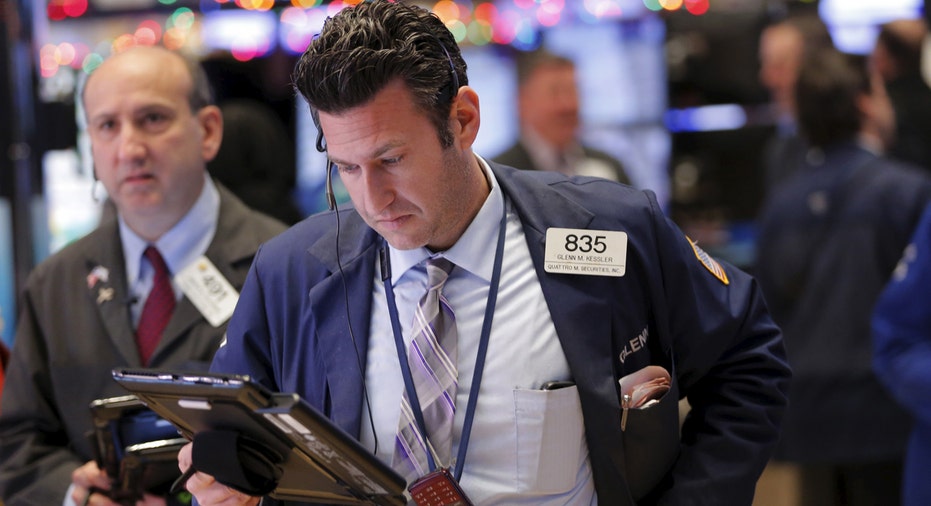January Shaped Up to be Wall Street's Worst Month in Five

U.S. equity markets ended the week on a high note, with the major averages closing in positive territory. Over the last five trading days, the Dow gained 2.3%, while the S&P 500 added 2.48%, and the tech-heavy Nasdaq eked out a 0.5% gain.
It was a positive picture for the week, but it couldn't reverse what proved to be Wall Street's worst month since August. Global volatility forced the markets into their worst start to a new year ever within the first two weeks of the year as the major averages slipped into correction territory, defined as a 10% drop from their most recent high.
As of Friday, the S&P 500 managed to extend itself just above correction, posting monthly losses of 5%. Meanwhile the Dow and Nasdaq remained there, notching losses of 5.5% and 7.9%, respectively.
From a sector perspective, three of 10 S&P 500 sectors posted gains for the period with telecom booking the biggest gains of 5.5% and utilities and consumer staples booking gains of 4% and 0.4% each. Investors rushed into those defensive sectors, the trend during tumultuous periods, which are preferred for their dividends during market turbulence.
Materials and financials posted the biggest declines of 10% and 8%, respectively.
David Lafferty, chief market strategist at Natixis Global Asset Management, which oversees $966 billion in assets under management, warned not to expect the main drivers of the market’s volatility – multi-year low oil prices, volatility in China, and worries over slowing global economic growth – to go anywhere as the calendar’s page flips to February.
“It’s going to be a really interesting month because there’s going to be a macro-economic news void,” he said. “We won’t get a revision to U.S. GDP for a month, there’s no Federal Reserve meeting until March, we’re waiting for the European Central Bank in March, the Bank of Japan just moved, and there’s talk coming out of Russia and OPEC on a meeting but nothing is definite.”
To that point, it was a busy month for central banks. Just this week on Wednesday, the Fed opted to keep rates steady at 0.25% - 0.50%, rather than raising rates again after December brought the first hike in nearly a decade from near-zero historic lows. Added to that, the ECB also kept rates steady while its president, Mario Draghi, essentially said he and his fellow policymakers would do whatever it took to keep the Eurozone economy afloat. And on Friday, the Bank of Japan shocked global markets with an unexpected rate cut, putting the benchmark interest rate there in negative territory at -0.1% from 0.1%.
“I never want to say February will be a dull month because we could get geopolitical events that pop up, but from macro data, there will be a void. I still think that China, oil, and the Fed are in the back of investors’ minds,” Lafferty said.
Oil prices hit a 12-year low, plunging below $27 a barrel, in January before rebounding slightly by the end of the month thanks to the biggest two-week percentage gain since March 2011. Global prices ended January solidly in negative territory, while the energy sector as a whole posted a 3.7% loss for the period. West Texas Intermediate crude prices declined 9.23% for the month, ending at $33.62 a barrel.
Meanwhile, Brent, the international benchmark, dropped 6.81% during the month to end at $34.74.
Prices were particularly volatile thanks to the persisting supply glut that’s plagued the market for nearly two years. Since prices began falling in the summer of 2014, global producers have done whatever it takes not to lose their market share. That’s resulted in worldwide oversupply and a significant impact to the bottom lines of the world’s biggest oilfield services companies, as evidenced by quarterly earnings results from majors like Chevron (NYSE:CVX), which on Friday said it saw its first quarterly loss in 13 years as profits plunged.
Economists at Barclays said while the markets have been sharply negative over the last 21 trading days, economic fundamentals haven’t justified significant cause for concern…unless the markets are pricing in something analysts have yet to project.
“Protracted weakness in financial markets and political uncertainty in key economies could weigh on activity in slow momentum. In other words, we may think markets are weaker than the fundamentals justify, but markets may see something we do not (and persistent weakness in financial markets may ultimately become a self-fulfilling prophecy),” they said in a research note Friday.
In the meantime, Lafferty said over the near term, he’s focused on two non-farm payrolls reports before the next Fed meeting in March, and how the situation in the oil patch shapes up.
“The probability the Fed moves in March is extremely low no matter how good that jobs report is,” he said. “I’m not sure either of the numbers will be strong enough to move the Fed. People will also be looking at oversupply in the oil market for any signs that production and supply are falling or that supply and demand are coming more into equilibrium.”



















